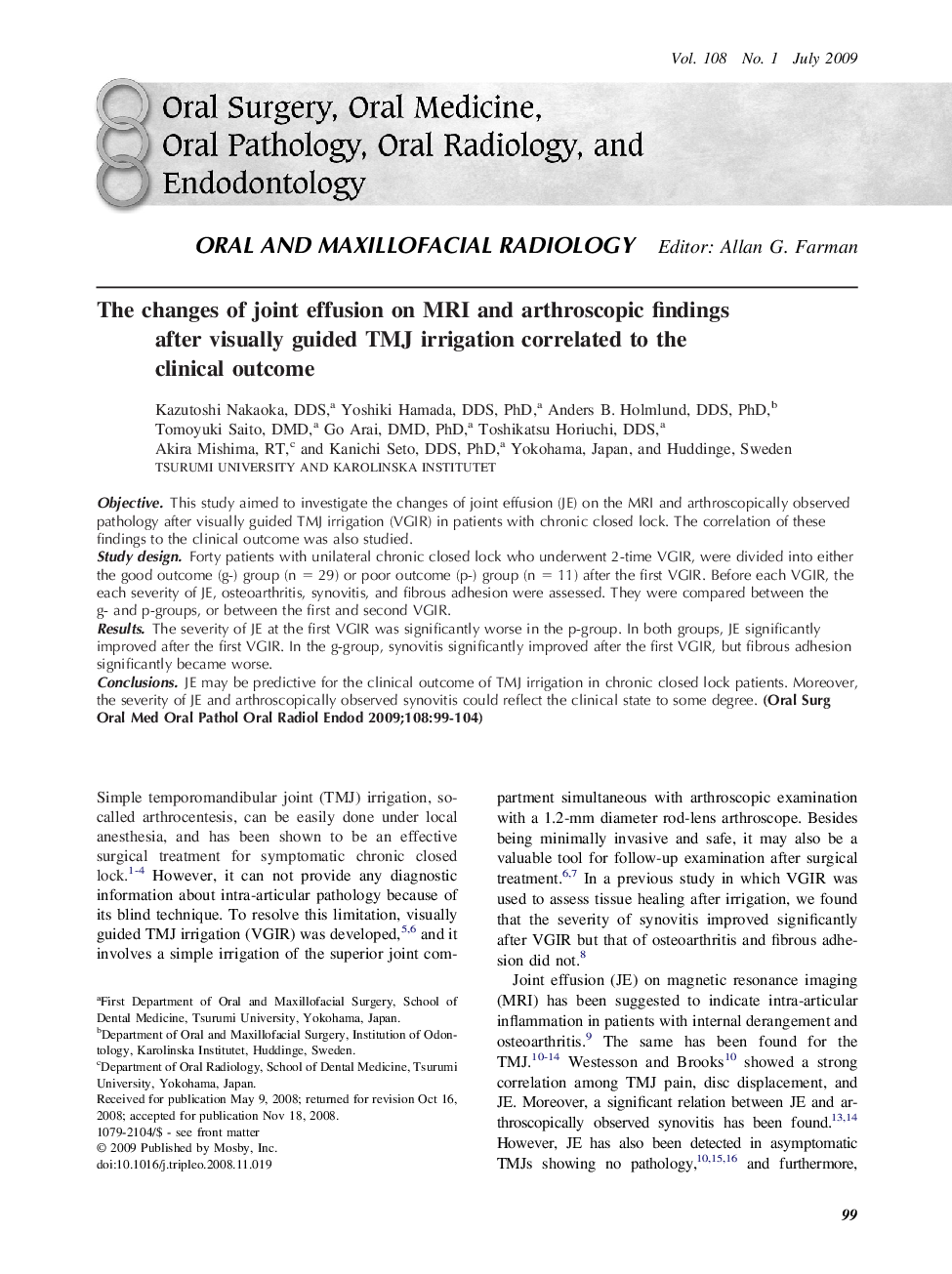| Article ID | Journal | Published Year | Pages | File Type |
|---|---|---|---|---|
| 3168192 | Oral Surgery, Oral Medicine, Oral Pathology, Oral Radiology, and Endodontology | 2009 | 6 Pages |
ObjectiveThis study aimed to investigate the changes of joint effusion (JE) on the MRI and arthroscopically observed pathology after visually guided TMJ irrigation (VGIR) in patients with chronic closed lock. The correlation of these findings to the clinical outcome was also studied.Study designForty patients with unilateral chronic closed lock who underwent 2-time VGIR, were divided into either the good outcome (g-) group (n = 29) or poor outcome (p-) group (n = 11) after the first VGIR. Before each VGIR, the each severity of JE, osteoarthritis, synovitis, and fibrous adhesion were assessed. They were compared between the g- and p-groups, or between the first and second VGIR.ResultsThe severity of JE at the first VGIR was significantly worse in the p-group. In both groups, JE significantly improved after the first VGIR. In the g-group, synovitis significantly improved after the first VGIR, but fibrous adhesion significantly became worse.ConclusionsJE may be predictive for the clinical outcome of TMJ irrigation in chronic closed lock patients. Moreover, the severity of JE and arthroscopically observed synovitis could reflect the clinical state to some degree.
